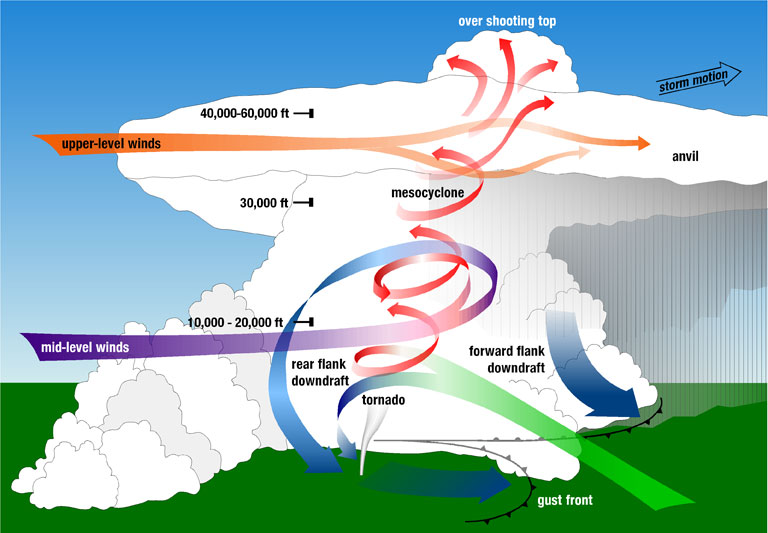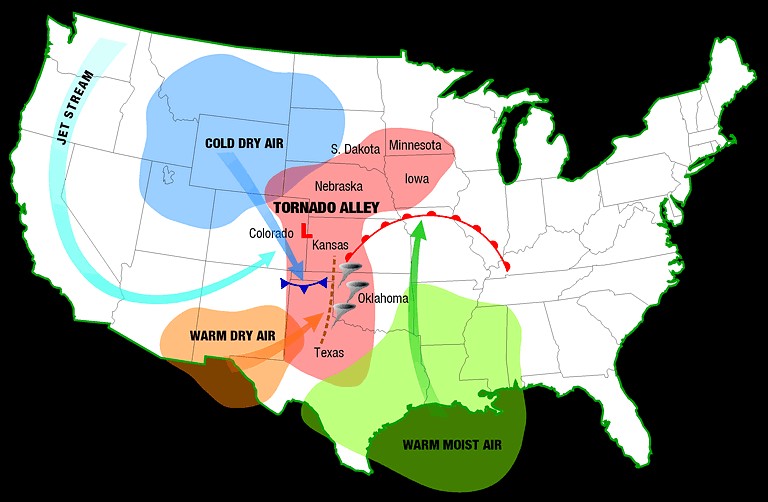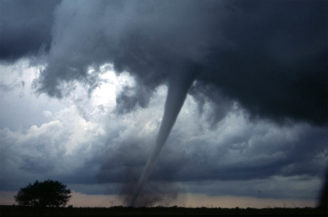It seems strange to be talking about weather events that peak in the summer, like tornadoes, while we still have massive winter storms impacting much of the Northeastern United States. However, now is typically when we start shifting our focus onto the weather incidents of the upcoming summer season. The end of February is when tornado season starts to ramp up, and will typically peak around mid-June.
Tornadoes are dangerous and devastating weather events that we are still working to fully understand. It is not surprising that several popular movies are based on disastrous tornadoes (Sharknado is an office favorite). Living in the United States, the frequency of high profile news coverage on tornadoes would have people believe that they are common around the world. The truth is that tornadoes are very rare outside the United States. Around 1,200 tornadoes form in the United States in an average year. This is over ten times the second highest country, Canada, which averages around 100 per year. Violent tornadoes, those rated highest on the Enhanced Fujita Scale, occur almost solely in the United States. Canada recorded its first EF5 equivalent tornado ever in 2007, and most countries have no historical record of tornadoes over EF3. We were intrigued by these figures and wanted to share how tornadoes form and what makes the United States so susceptible to these rare weather events.
How Tornadoes Form

The Makeup of a Tornadic Supercell Storm (Credit: NOAA National Severe Storms Laboratory)
Tornadoes form when conditions for strong convective thunderstorms exist. A cold, dense front colliding with a warm, moist front pushes the warm moist air up into the atmosphere, causing the air to cool, condense, and form massive clouds and highly unstable winds. The largest and most damaging tornadoes have occurred from Supercells. Supercells are thunderstorms that have a well-defined rotation called a mesocyclone. Most thunderstorms and supercells do not produce tornadoes. Although it is not fully known what does or does not trigger a tornado when all other required conditions are met, some experts believe shear or cross winds along the leading edge of these storms can be one cause. Shear winds can cause a cyclonic rolling effect on the uplifting air. A tornado can form and touch down when that cyclonic air mixes with the cooler air that is sinking down toward the ground.
Why the United States?

Colliding Weather Fronts Along Tornado Alley (Credit: National Oceanic and Atmospheric Administration)
The unique geography and location along the northern hemisphere causes frequent convective thunderstorms in the Midwest United States, also known as “Tornado Alley”. Other regions around the world have conditions where tornadoes can, and do, form, but few have conditions that produce these storms as frequently or as extreme as the United States. The warm, moist air coming in from the Gulf of Mexico colliding with the cold, dry, and dense air from Canada and/or the Rocky Mountains causes storm energy that is rare across the globe. The energy of the storms comes from the contrast of the temperature, pressure, humidity, and speed of the colliding storms. The Jet stream can cause pressure differentials in the atmosphere above the storms, encouraging cyclonic effects. Warm, dry air from the Southwest United States can cause further instability for these storms. All of these factors are given some credit for causing favorable conditions for starting tornadoes, but they are still being studied to find their full effect.
Sources:
https://scied.ucar.edu/shortcontent/how-tornadoes-form
https://www.nssl.noaa.gov/education/svrwx101/tornadoes/
https://www.spc.noaa.gov/faq/tornado/





2 Comments